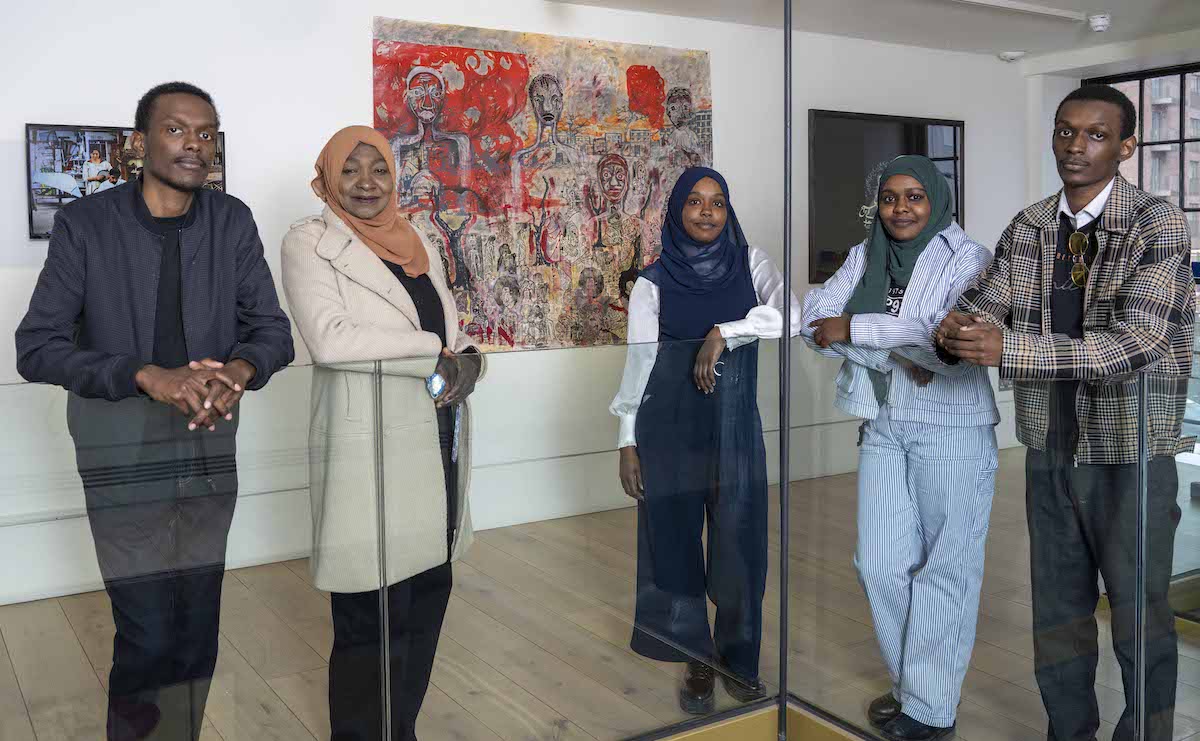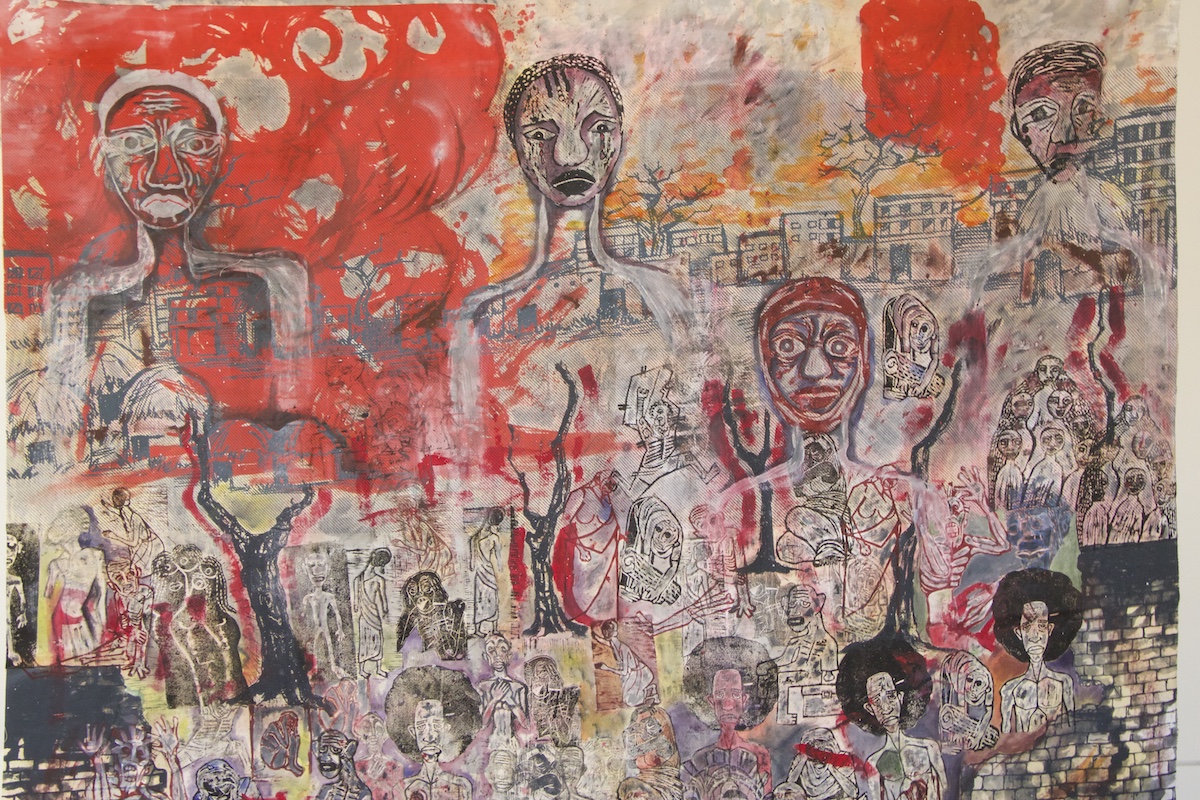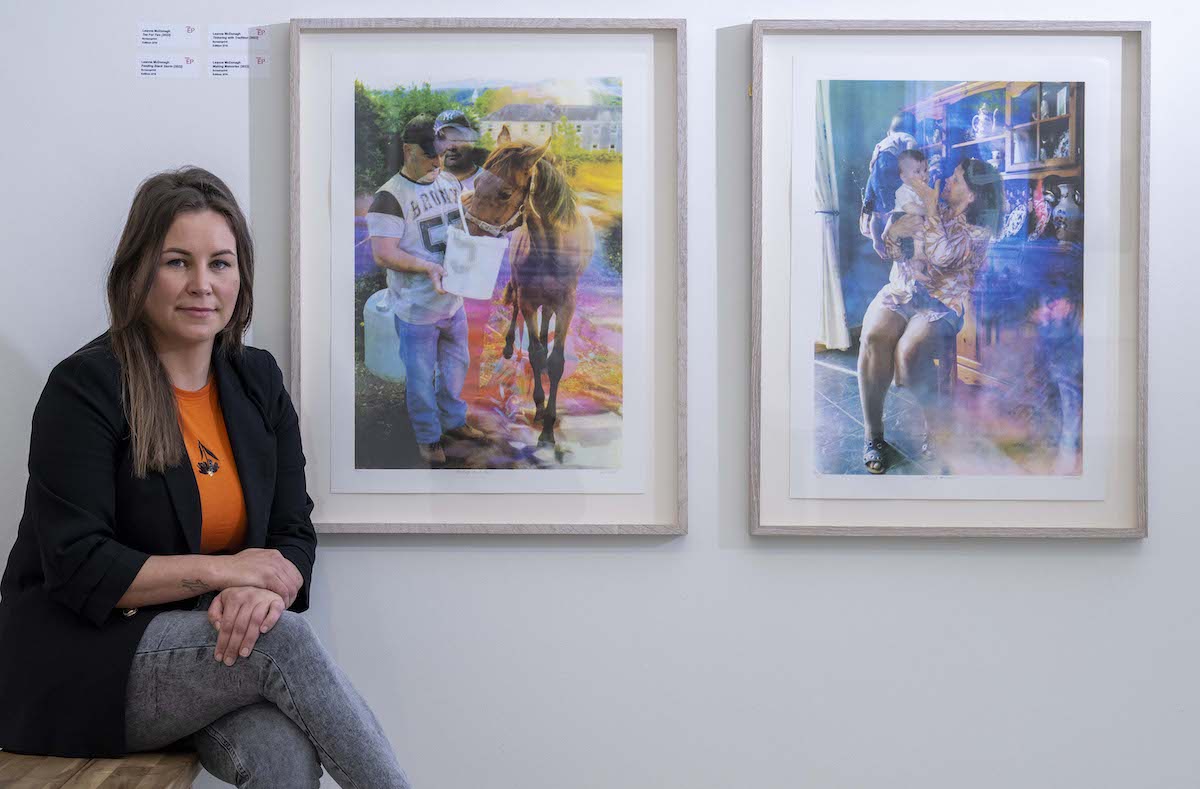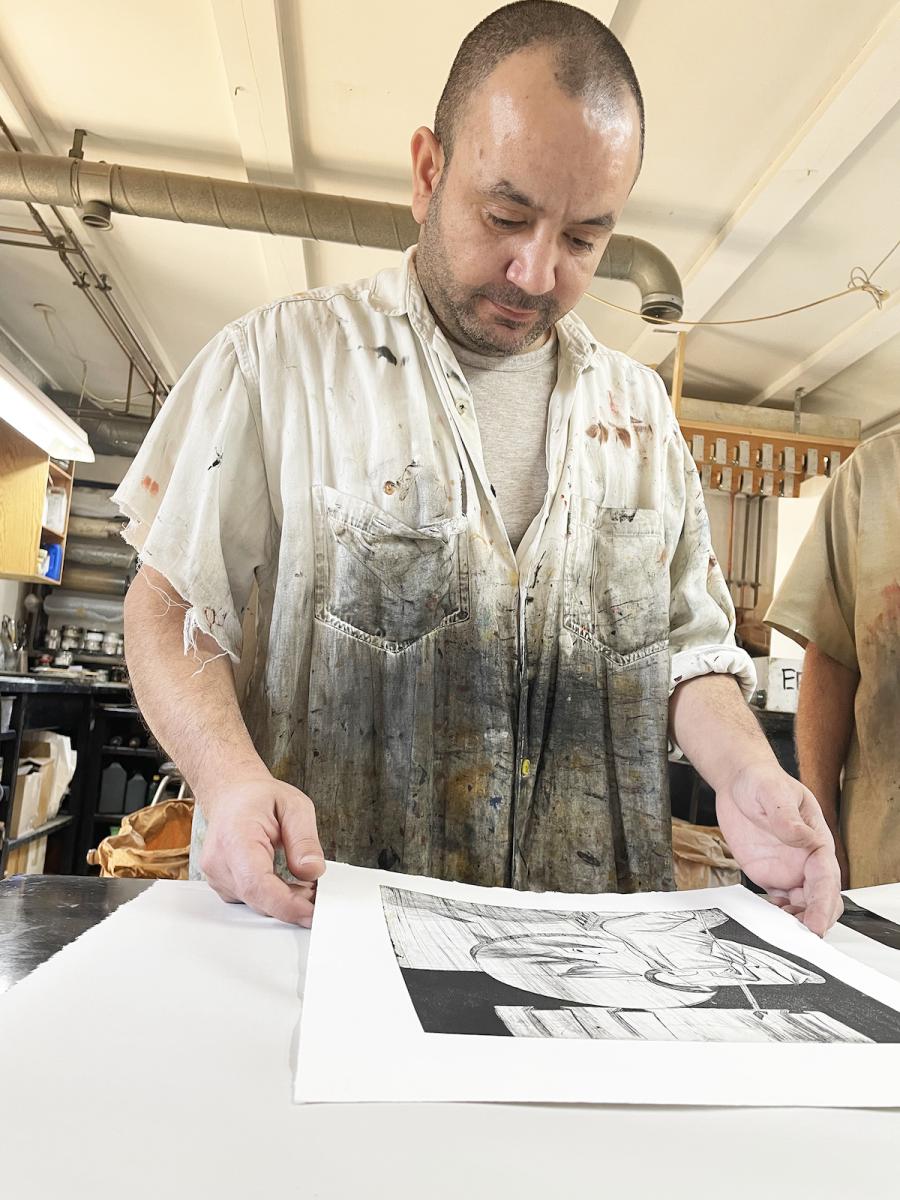This wonderful Cornish workshop and museum is dedicated to the legacy of studio pottery trailblazer Bernard Leach
3 stories of migrant artists and their amazing new art
3 stories of migrant artists and their amazing new art
9 Jun 2023
The Edinburgh exhibition Uprooted Visions explores diverse works by artists from refugee, Traveller or migrant backgrounds. Jane Audas speaks to three of them
Migration is much across our news these days, yet the voices of refugees are not often the ones we hear. This makes the show Uprooted Visions compelling, enabling us to see migration pictured by people who have lived the experience.
The exhibition fills both galleries at Edinburgh Printmakers, an old, converted factory, where wellington boots were once made. It is a fascinating, layered show, with new works by 30 international artists whose lives and practices have all been disrupted by the experience of migration.
They originate from as far as Iran, Malaysia and Ukraine and, while the artworks are all hugely different, the stories behind them, and the artists themselves, have a shared commonality. Their art is implicitly or explicitly about home: being displaced from home, finding a new home and moving home.
A view of Uprooted Visions at Edinburgh Printmakers. Image: courtesy Edinburgh Printmakers/Alan Dimmick
The works were all made during month-long residences across Europe in 2022–23. Led by Edinburgh Printmakers and funded by Creative Europe, the wider programme was called In from the Margins and provided each artist a space to experiment, explore, use new techniques or develop current projects. Four other arts organisations hosted Uprooted artists: Cork Printmakers in Ireland, AGA LAB in Amsterdam, Funen Printmaking Studio in Odense, Denmark and International Centre of Graphic Arts in Ljubljana, Slovenia.
All the traditional printmaking techniques – from screen printing and etching to mono print – are included in this exhibition. In addition, digital collage, textiles, video, sculpture and photography are also there – in some, even layered in a single work. The result is a tour de force of exciting art. Here, three of the artists reveal more of their stories.
 The family collective Arafa and the Dirars. Image: Edinburgh Printmakers/Neil Hanna
The family collective Arafa and the Dirars. Image: Edinburgh Printmakers/Neil Hanna
Collective scars
Making the work Our Scar was special for the Hull-based Sudanese collective Arafa and the Dirars. It was the first time the family – Arafa Hassan Gouda and four of her six children: Mayas, Ethar, Waieel and Akram Dirar – had worked together as a collective.
Our Scar depicts the moment of bombing in Libya that the family experienced while (from 2011–15) they lived under canvas in a refugee camp on the borders of Egypt and Libya.
At the time the children ranged in age from eight to late teens. And during that time of endless waiting art became their coping mechanism, driven by their mother. ‘My mum is the glue. She is the one, through it all, seeking safety for her family and her children,’ says Ethar. ‘Sometimes you don’t appreciate the value of something until you go through a difficult time. I think this is where art comes in.’
The family came to the UK in 2015 and were taken to Hull, where they are still based, working in a studio at East Street Arts. It was there they were made aware of the Edinburgh residency opportunity. Initially unsure if they could do the residency as a collective, they were encouraged to do so. ‘We were at the stage where we were more comfortable talking about our experiences through our art. Our Scar is the most direct expression of that moment when we got struck by the airplanes in Libya.’
 Our Scar, a screen and block print on fabric. Image: courtesy Edinburgh Printmakers
Our Scar, a screen and block print on fabric. Image: courtesy Edinburgh Printmakers
In creating Our Scar each member of the collective made some five woodblocks that were added to the base screen print. The work is one of the larger pieces in the exhibition and boils with complex emotions and visuals. ‘We wanted to share this with others, especially with what is going on around the world. The work is quite ugly, but people need to know what war does to people. It is heartbreaking to see it happening all over again. It seems the human soul is so easily lost among everything else. War is horrible and ugly. We wish people knew there is nothing worse than losing one’s soul. Nothing is worth that.’
 Leanne McDonagh with a series of her prints. Image: Edinburgh Printmakers/Neil Hanna
Leanne McDonagh with a series of her prints. Image: Edinburgh Printmakers/Neil Hanna
A Traveller’s tale
Leanne McDonagh has four screen prints in Uprooted Visions, all inspired by her upbringing as an Irish Traveller.
She took her residency at Cork Printmakers in Ireland and the experience was transformative: ‘I love to meet other people from other cultures and different parts of the world. It was great to be able to connect with others through themes of identity, kinship and belonging, and to see how their practices were influenced by such themes.’
Her art is based on photography. ‘I explore the status and intrigue around my community, creating statements and comments that invite the viewer to question any stereotypes or preconceived notions they might hold.’ Her work focuses on domestic moments: ‘I capture the fleeting transience of the Traveller community’s condition, memories and experiences, as well as my own existence as a Traveller woman.’
 Tinkering with Tradition, 2022. Image: courtesy Edinburgh Printmakers
Tinkering with Tradition, 2022. Image: courtesy Edinburgh Printmakers
In Tinkering with Tradition we see McDonagh’s father, who was a tinsmith like his father before him. It was a common profession in the Travelling community in the 1950s. ‘I wanted to capture my father during the process of creating one of his pieces,’ says McDonagh, ‘as I believe his very act of creating is homage not only to his own father but to the past and to a way of life that was once more appreciated in a not so complicated world.’
 Rezan Arab at work. Image: courtesy of the artist
Rezan Arab at work. Image: courtesy of the artist
From Syria to Denmark
Artist Rezan Arab did his Uprooted residency in Odense, Denmark. He has two delicate, striking etchings in the exhibition, both inspired by Byzantine icons, but bringing in themes of loneliness and isolation that are personal to him and his story.
He left his home country of Syria and the ongoing civil war there some eight years ago. An award-winning student, he had studied for a BA in Painting at the Faculty of Fine Arts in Damascus and then for an MA in Fine Art at the University of Fine Art, Bucharest in Romania. In his new home – a small town in central Denmark – he initially struggled to settle. ‘It was difficult because of the difference in cultures and traditions. I lived in a state of isolation until I gradually adapted to my new situation.’ And so, instead of iconic figures in his work, we see disjointed bodies, uncomfortable in their reality, denuded of their sense of self.
 Solitude, 2022. Image: courtesy of the artist/Edinburgh Printmakers
Solitude, 2022. Image: courtesy of the artist/Edinburgh Printmakers
Arab has now found his place as an artist, exhibiting regularly in Sweden and Denmark. While this is good news, ‘Unfortunately,’ he shares, ‘I can’t live as an artist, full-time, due to the laws regarding residency in Denmark.’ His art changed after his migration. ‘Now I work on more contemporary, everyday subjects. My work has become more about nostalgia for the past and my homeland.’ And Syria is always in his thoughts. ‘It is my homeland. I think a lot about it. I have many friends and relatives there. The feeling that I’m a refugee will continue until I return to my country.’
Uprooted Visions
Until 2 July; admission is free
Edinburgh Printmakers, Dundee Street, Edinburgh
About the Author
Jane Audas
Jane Audas is a writer and curator with a special interest in art, craft and design history
JOIN OUR MAILING LIST
Become an instant expert!
Find out more about the arts by becoming a Supporter of The Arts Society.
For just £20 a year you will receive invitations to exclusive member events and courses, special offers and concessions, our regular newsletter and our beautiful arts magazine, full of news, views, events and artist profiles.
FIND YOUR NEAREST SOCIETY
MORE FEATURES
Ever wanted to write a crime novel? As Britain’s annual crime writing festival opens, we uncover some top leads
It’s just 10 days until the Summer Olympic Games open in Paris. To mark the moment, Simon Inglis reveals how art and design play a key part in this, the world’s most spectacular multi-sport competition



